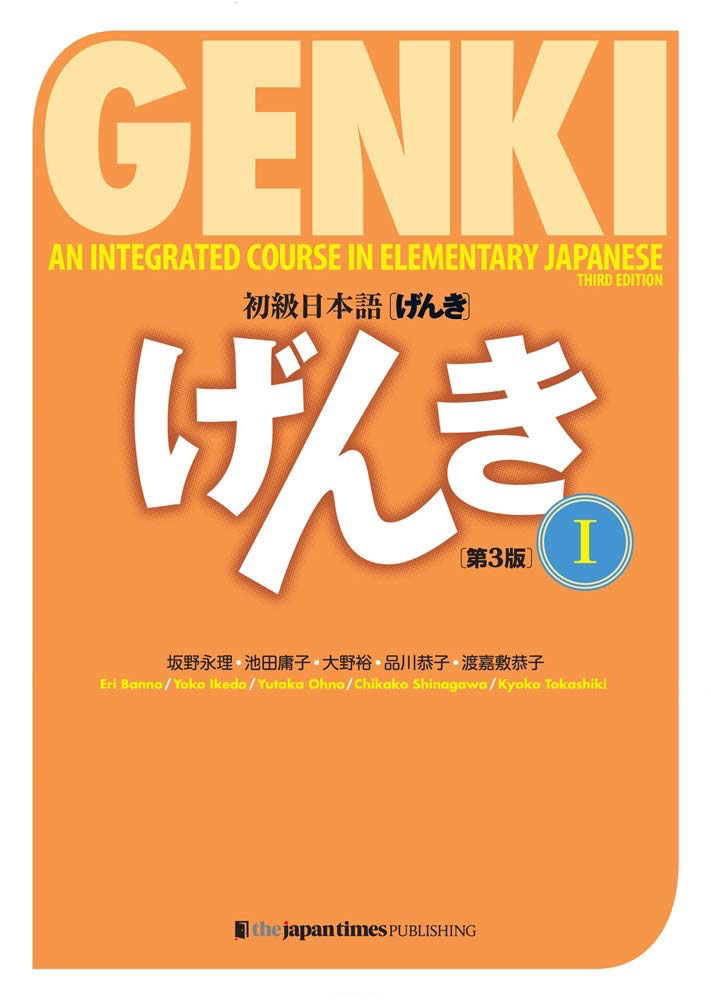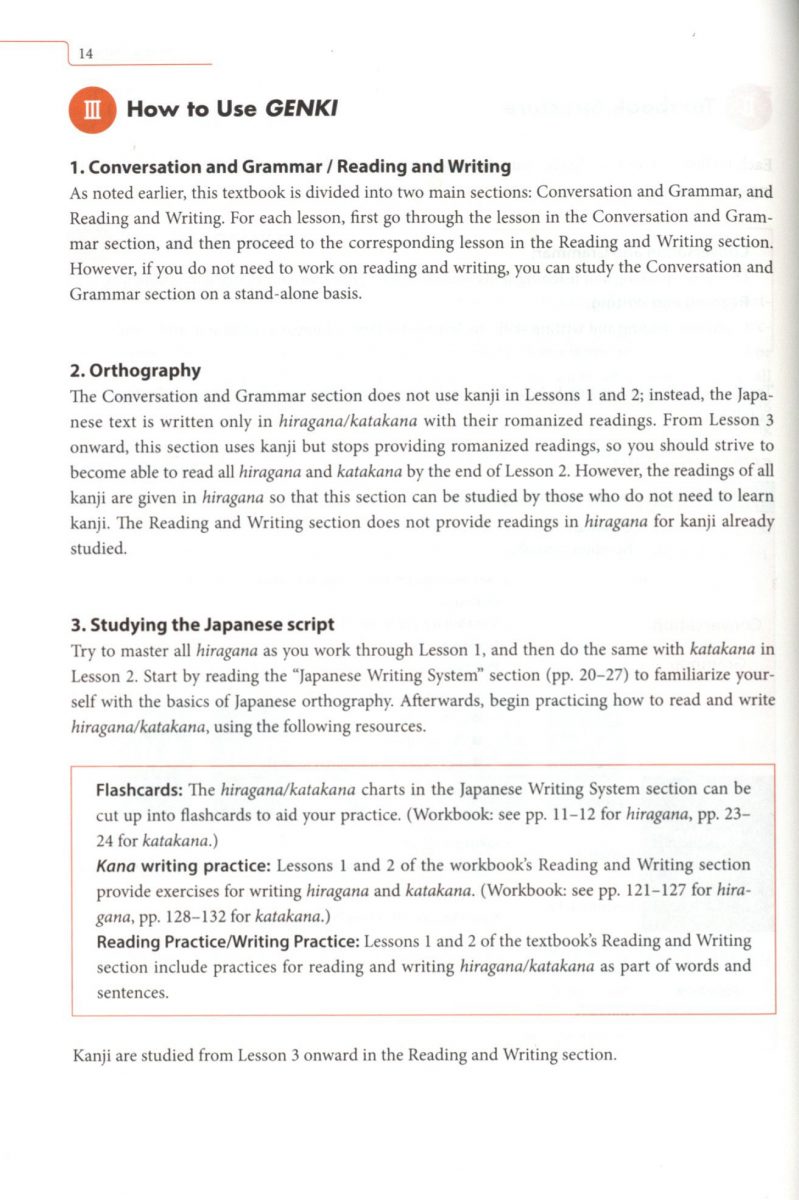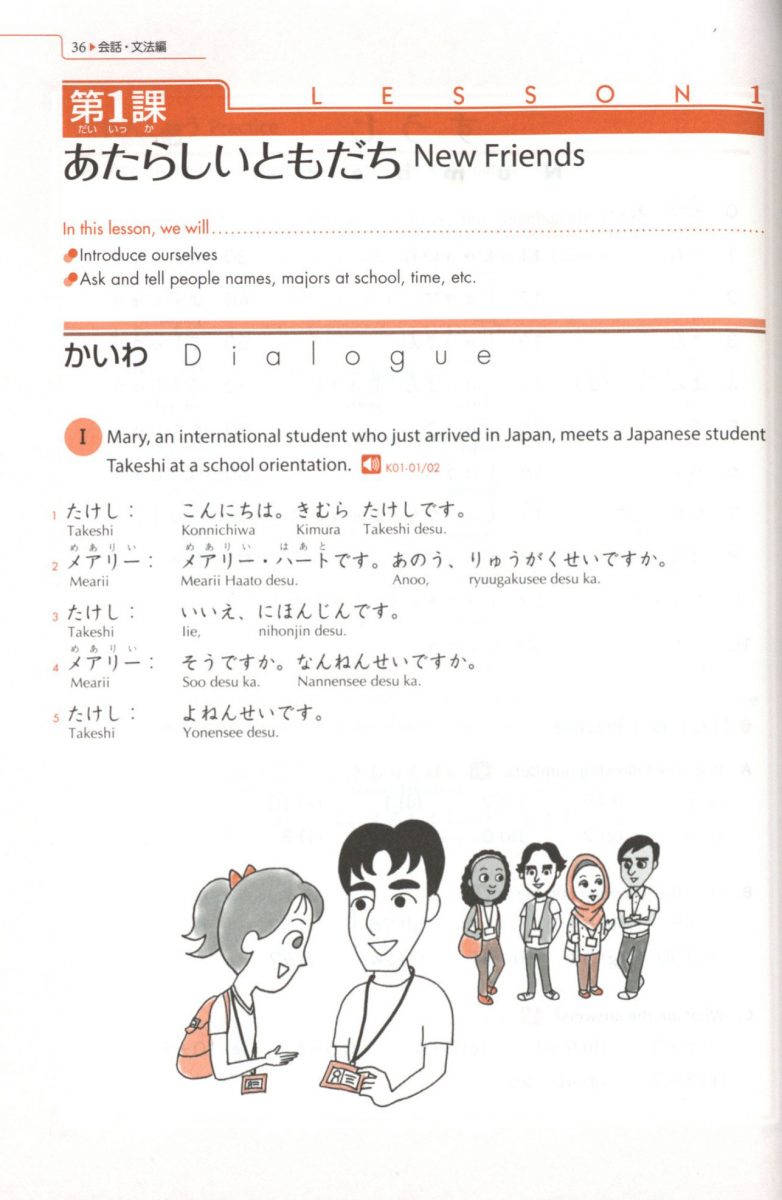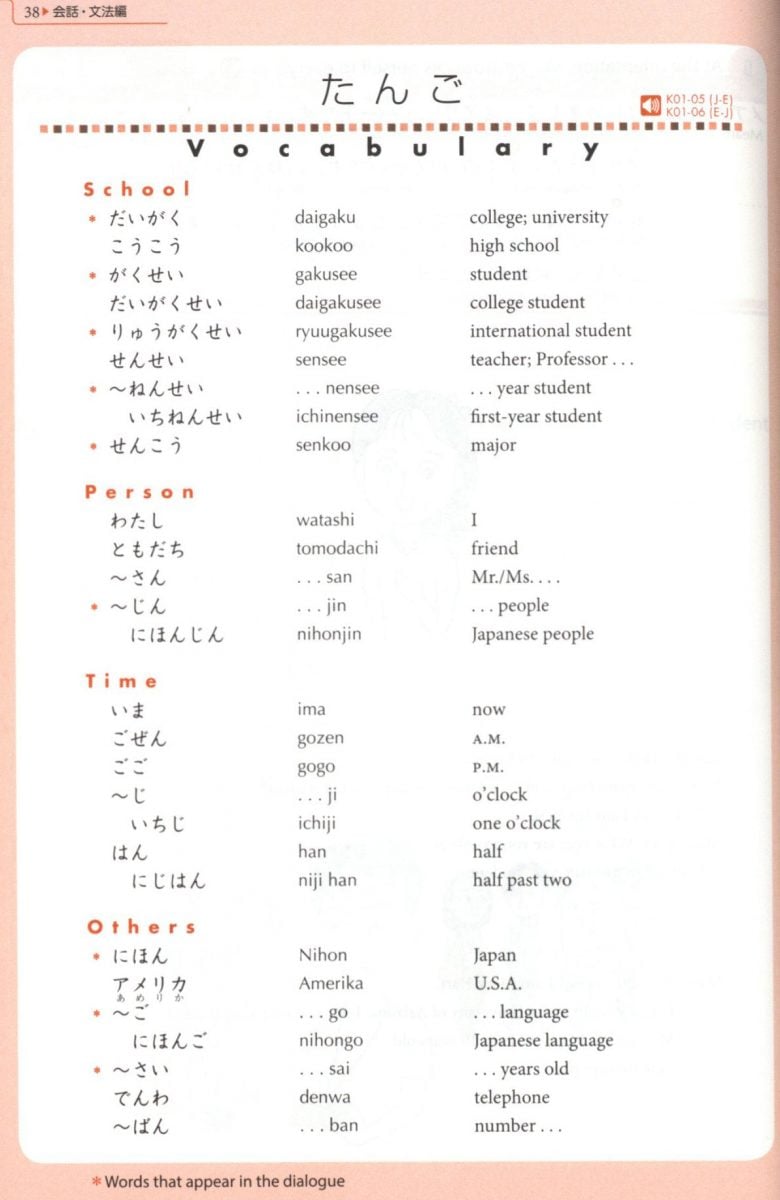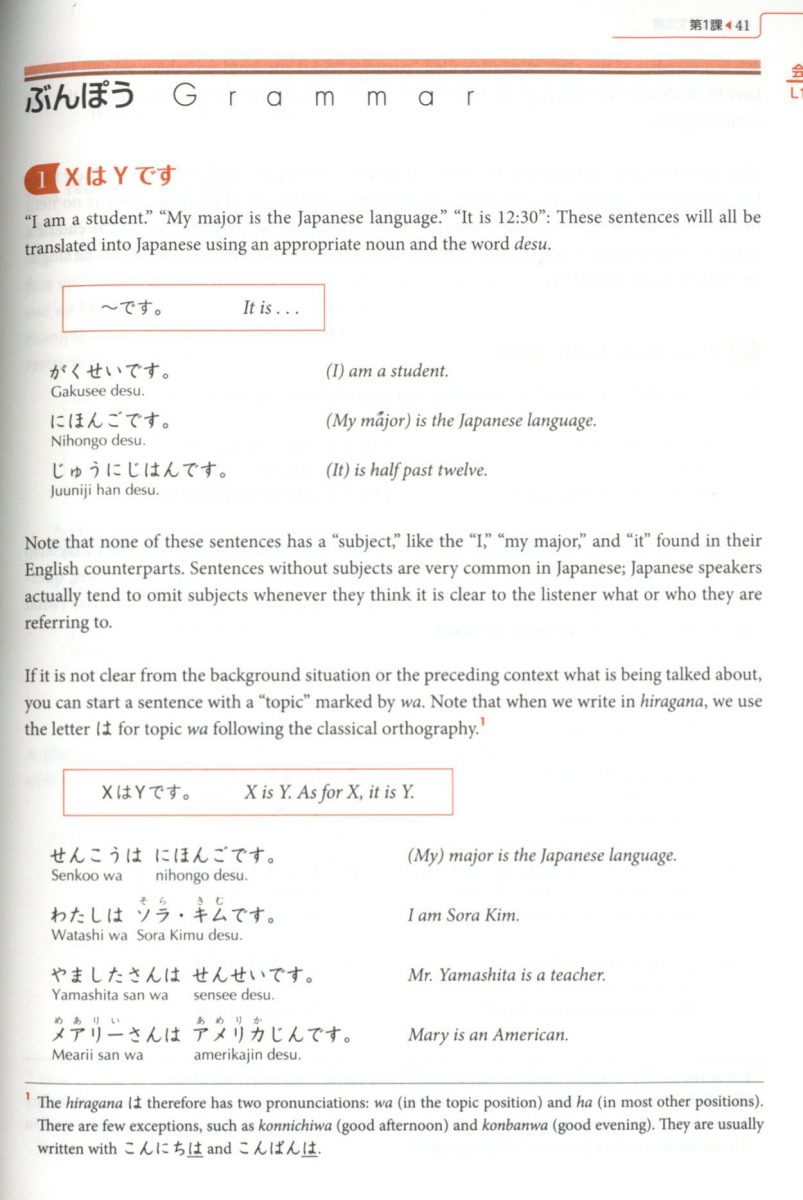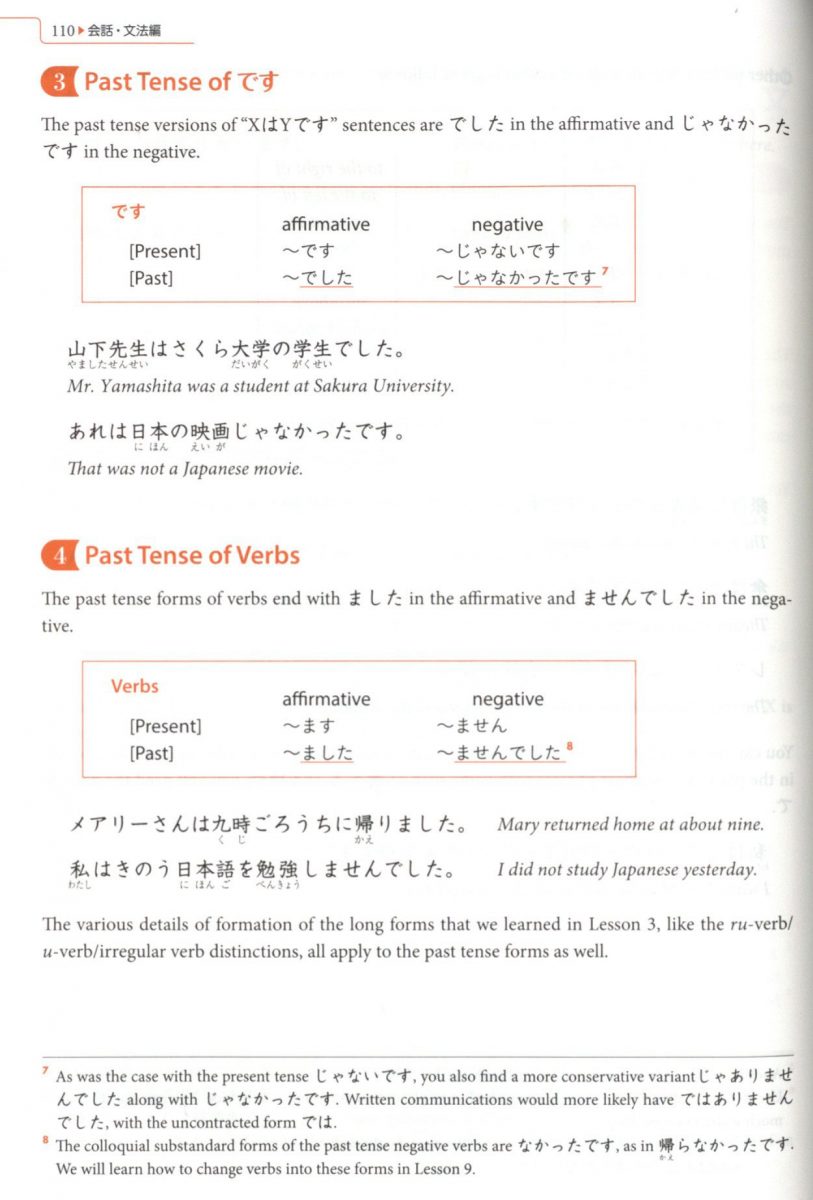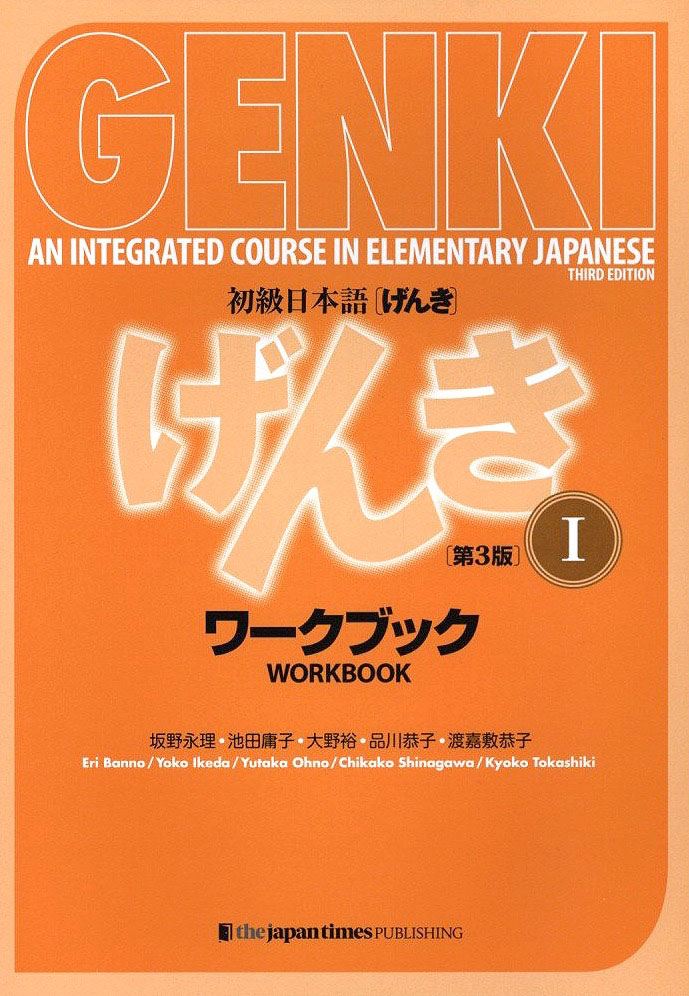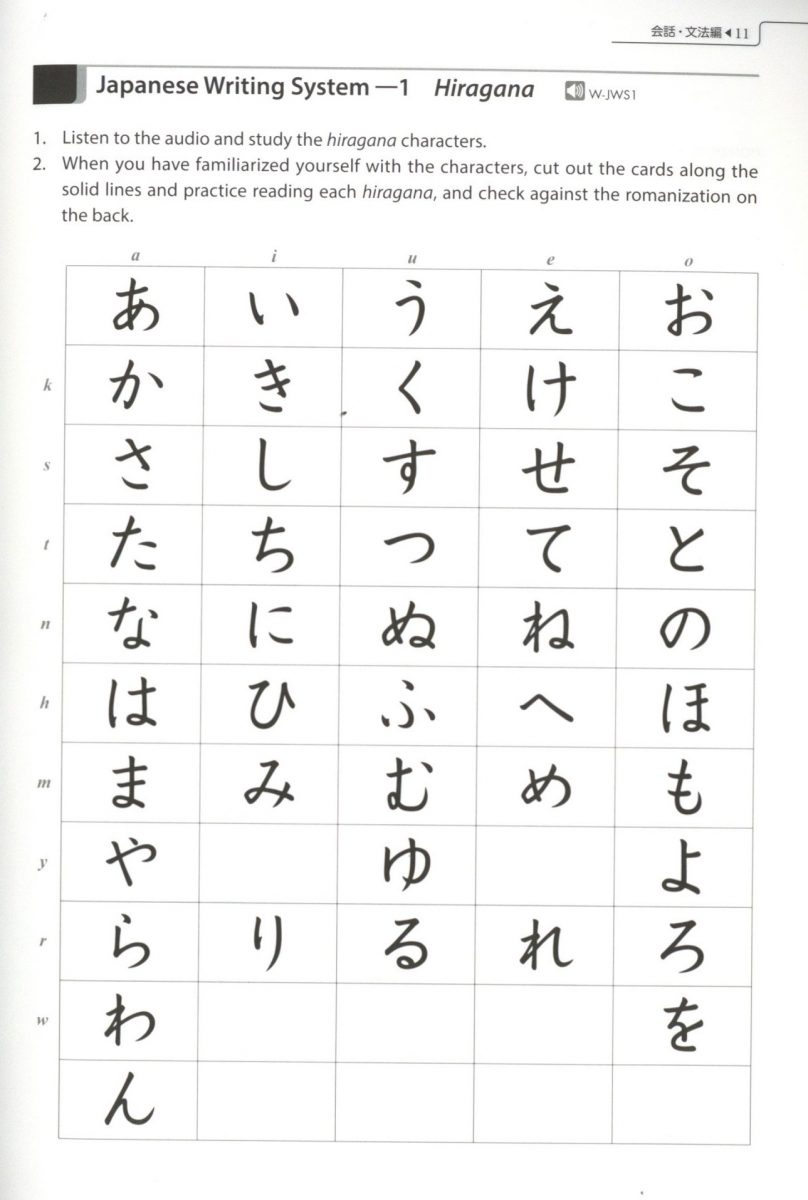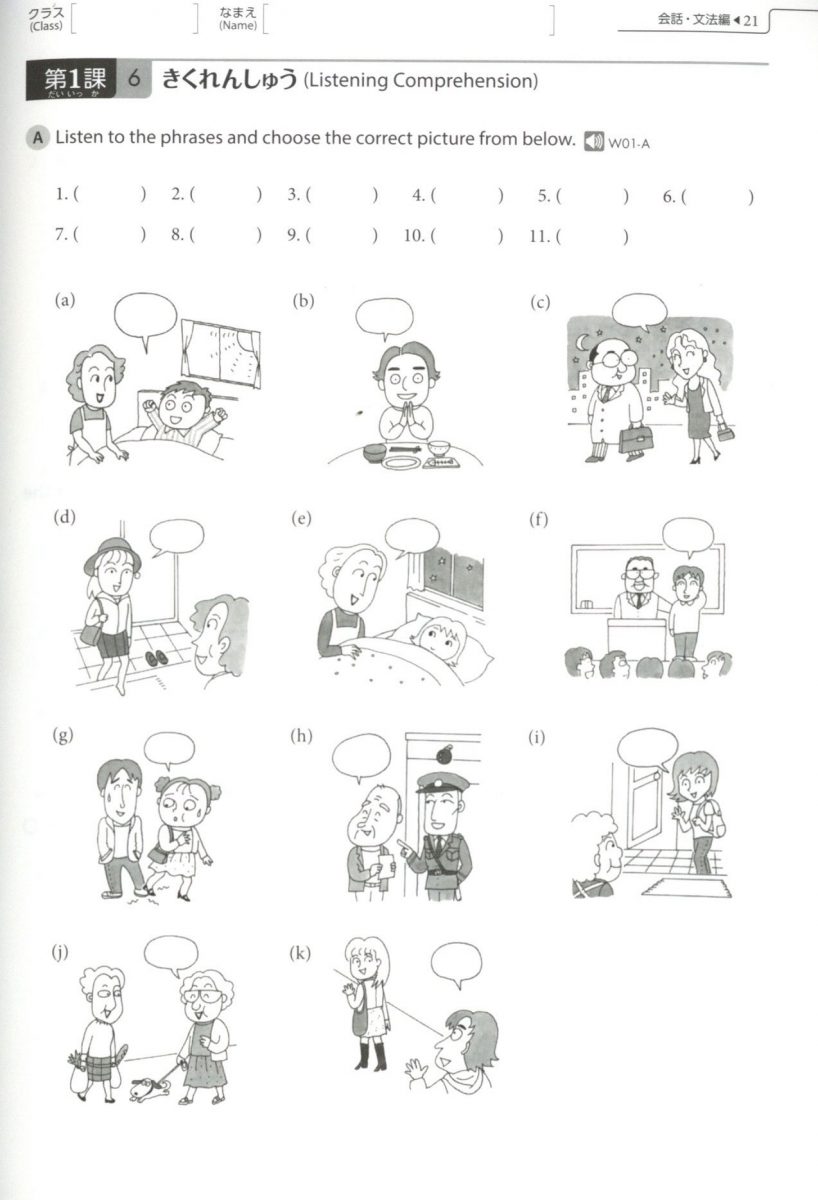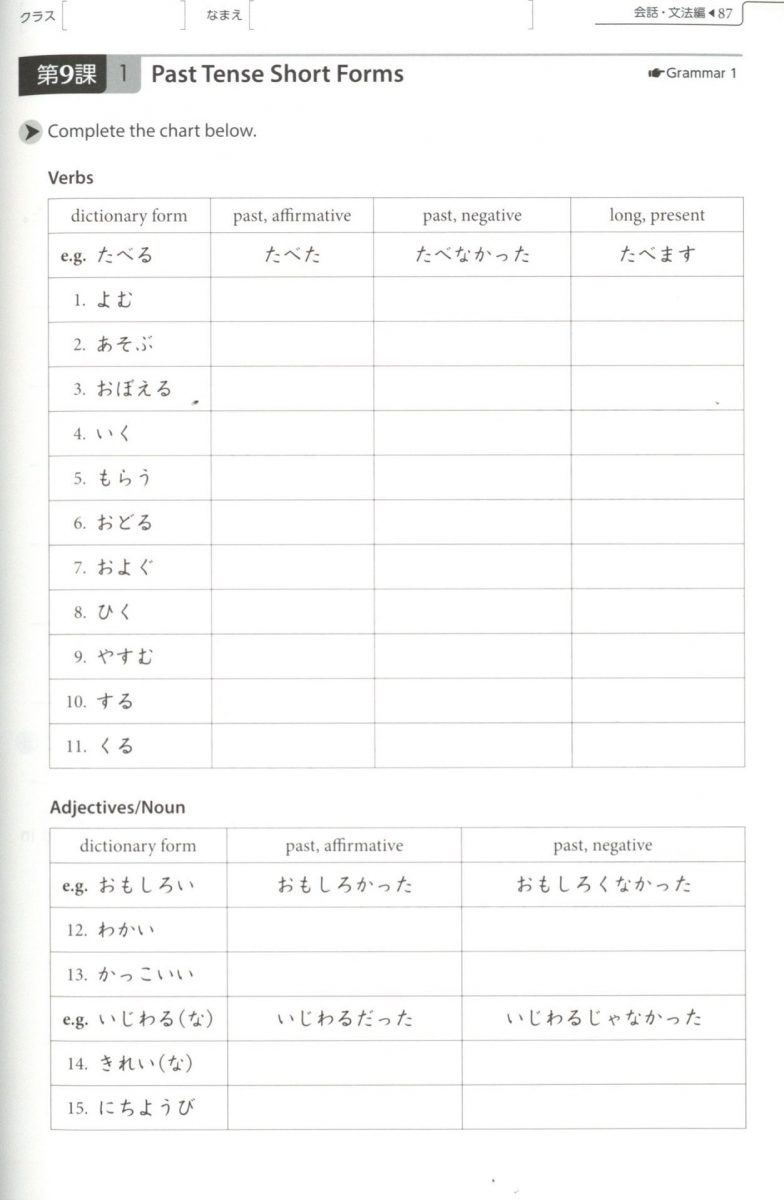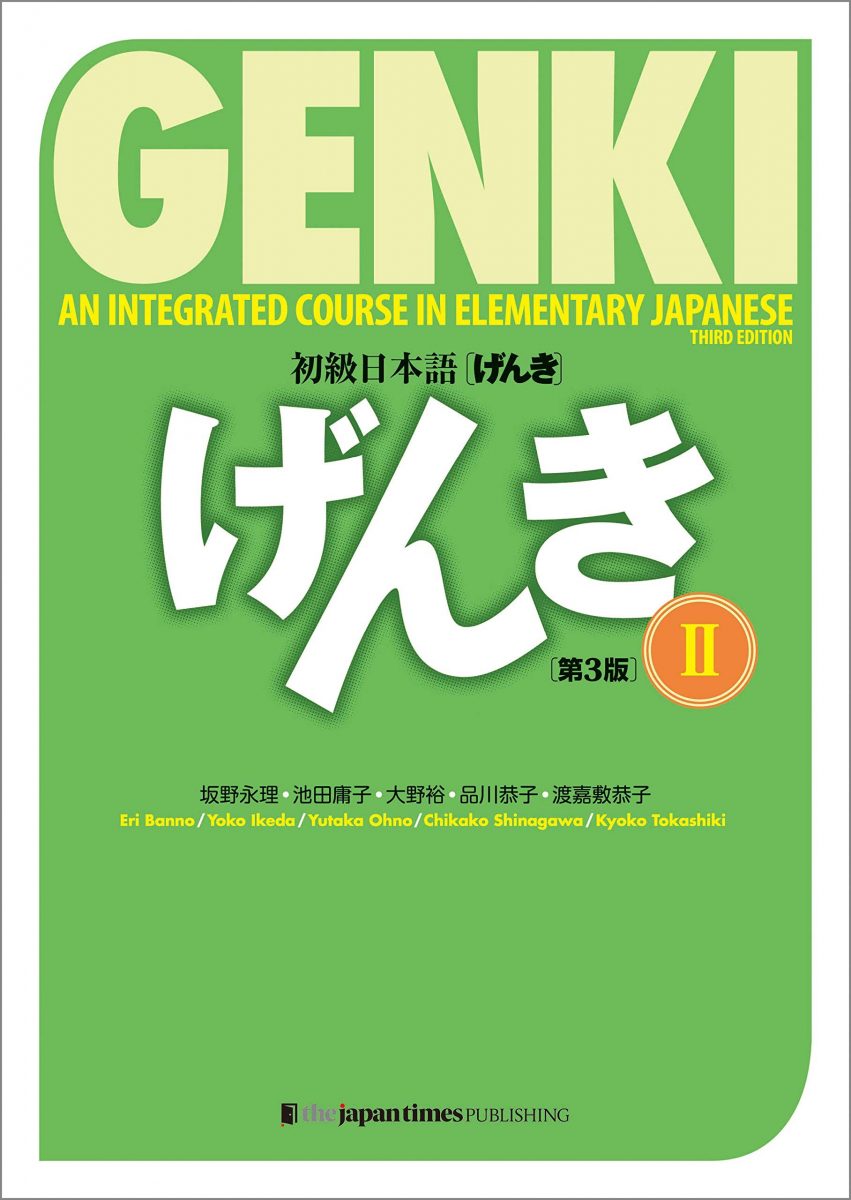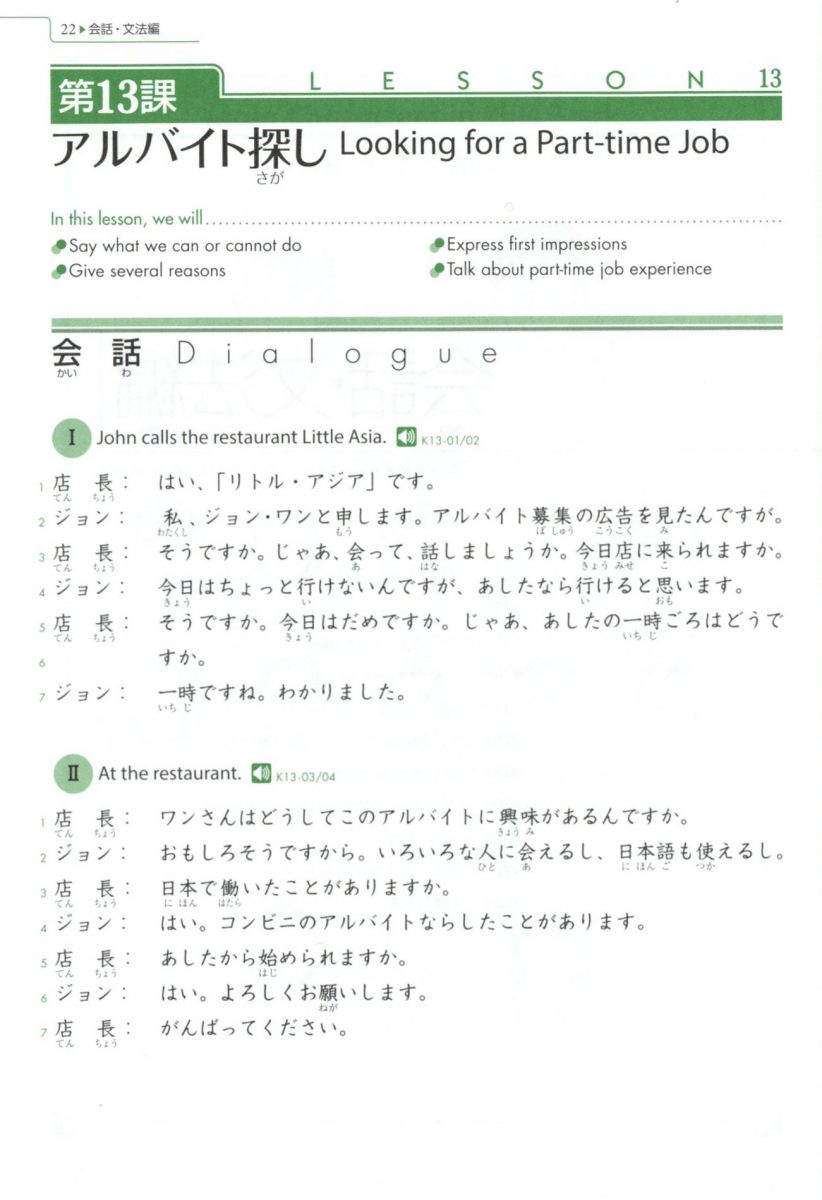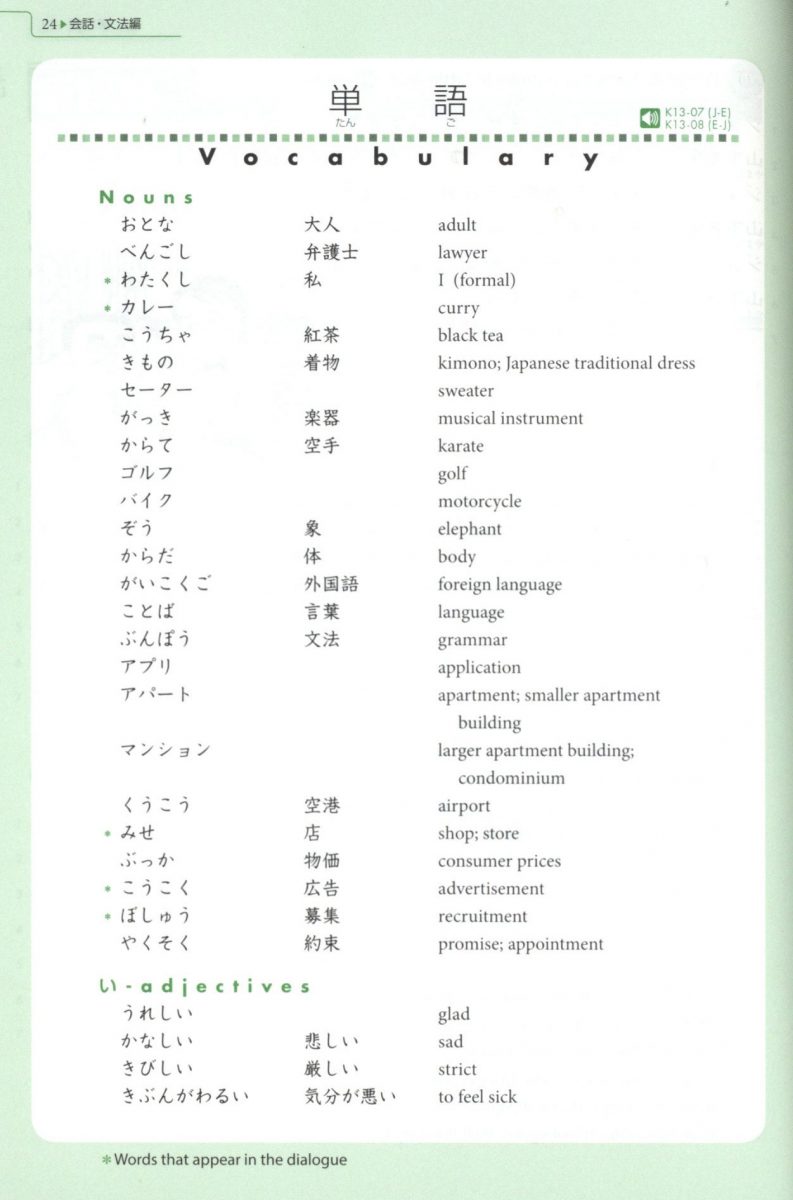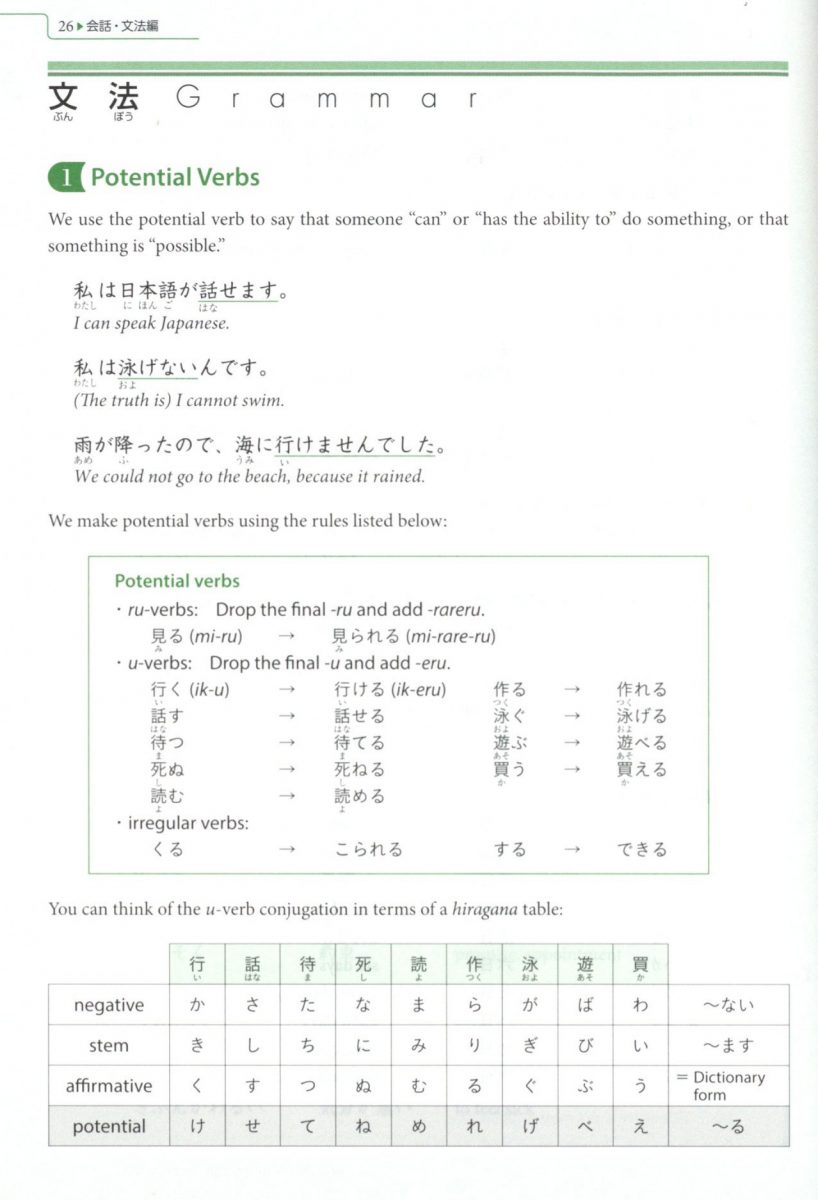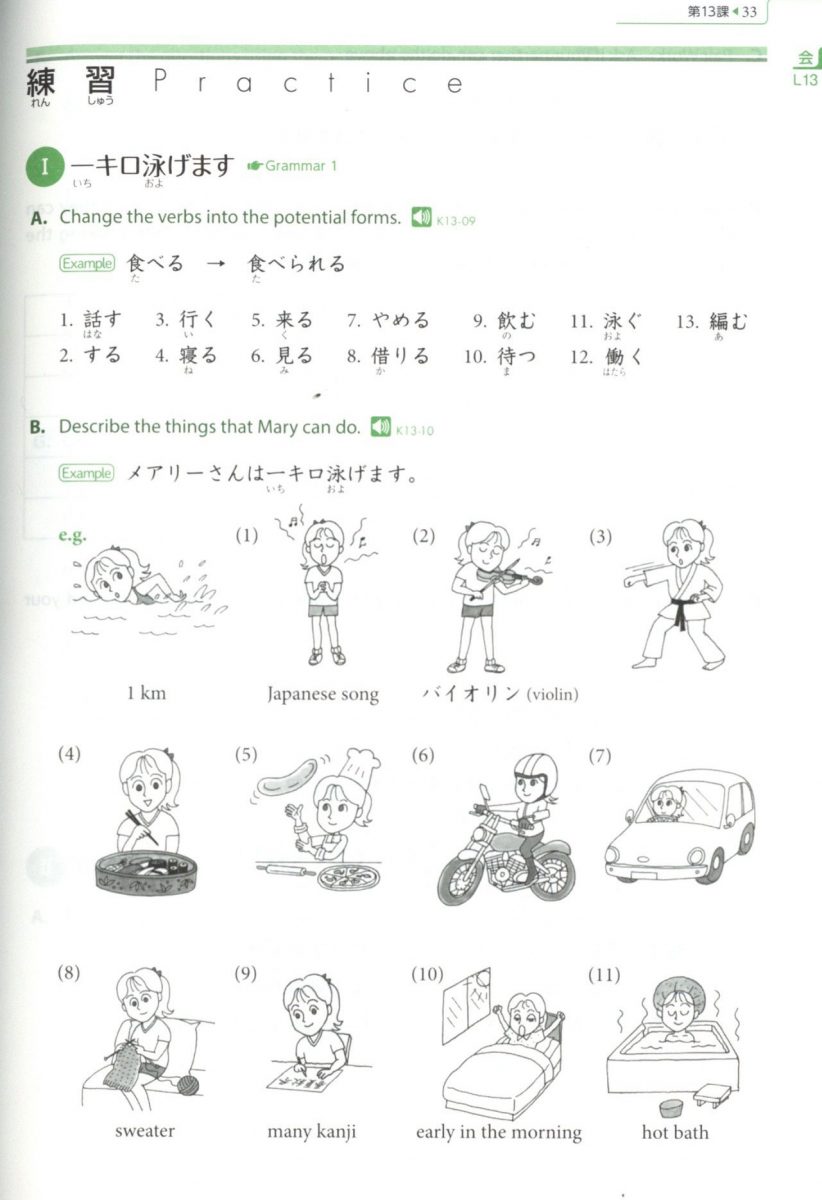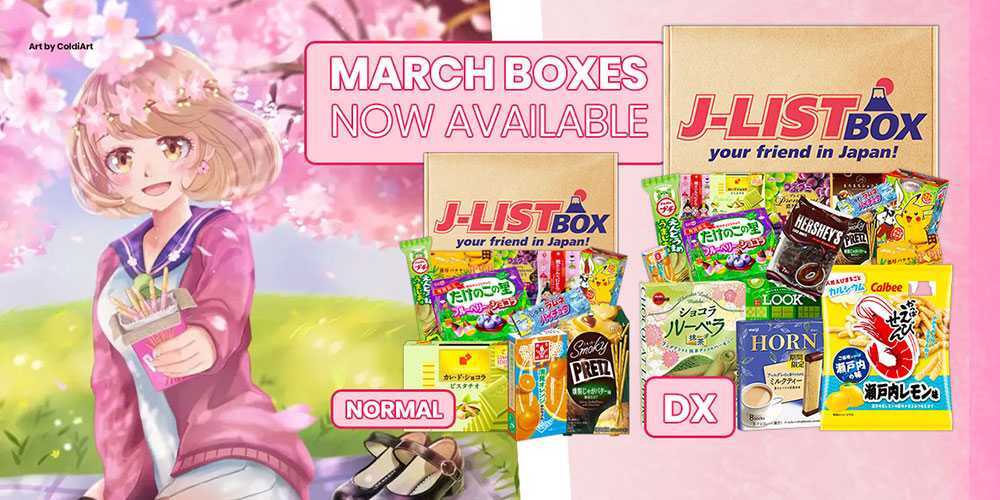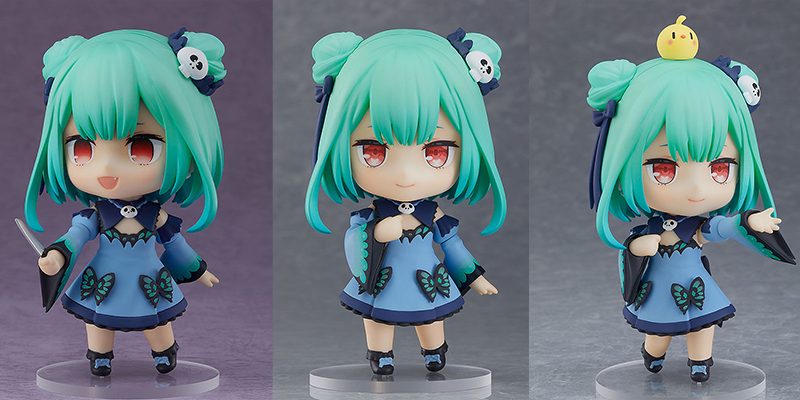If you’ve studied Japanese at any time in the 21st century, you’ve probably done so using the Genki Integrated Japanese textbook + workbook series, which we’ve sold on J-List for 20+ years. The Genki textbooks have just received a major update to the Third Edition, and while writing the descriptions for the site I was so impressed with the quality of the new textbooks, I thought I’d write a mini-review as a lifelong student of Japanese.

The History of Japanese Textbooks
I came to Japan in 1991 — back during the first Bush presidency, yikes! — to teach English as a Second Language “for a year or two.” While in university at SDSU, I’d had the foresight to get a minor in linguistics, a subject I’ve always been fascinated by, including a “theory and practice of teaching ESL” certificate that helped me get my first teaching jobs. It was certainly good to enter the field of teaching with a bit of academic background behind me.
My first Japanese textbook was Soga’s Foundations of Japanese which had been published in 1978 and was filled with stiff and unnatural-sounding Japanese phrases, a few of which were so outdated the teacher had to caution us against using them. This was in stark contrast to the fun and colorful textbooks learners of ESL had access to, which were created in accordance with up-to-date research about the best ways for people to acquire new languages in various social situations in a fun way as possible. We all wondered why the Japanese textbooks at the time had been so slow to incorporate the lessons that ESL textbook makers had learned about how to make language learning satisfying and fun.
Happily, the Genki Textbook series came along in 1999, and in a few years, pretty much became the default textbook to teaching beginning and intermediate Japanese both inside Japan and around the world. With its fun visuals and characters and more “socially-grounded” way of enabling language learning, they’ve been a huge improvement over the old way of studying Japanese.
Some sample pages from the Genki I textbook (click to enlarge).
What’s in the New Genki Textbooks Third Edition?
Compared with past editions, the Third Edition of the Genki textbooks is greatly expanded, with many more pages, lots of visuals to improve learning, lots of other improvements. The changes include:
- Updated dialogue that reflects naturally spoken Japanese today.
- Lessons that make use of “scenario-based learning” which is studying various vocabulary and concepts around a given real-life situation, to help connect the lessons to the real world and reinforce new concepts with other related concepts.
- Greatly improved grammar descriptions inside the textbook, which are great for self-guided students. (The first edition of Genki was 100% in Japanese only, making self-study quite difficult.)
- Practice lessons that reinforce grammar and topics in each lesson.
- “Let’s Find Out” sections that give you assignments to complete.
- A new iOS and Android app called OTO Navi gives you access to all the audio segments of each chapter, which is a huge improvement of sticking a CD inside the textbook. You can review the audio lessons from anywhere!
Sample pages from the Genki I Workbook
A Japanese Textbook Series That Forces You to Read Japanese
In my long post giving advice for students of Japanese based on my own experiences, one piece of advice I have for you is to avoid any Japanese textbook that uses ローマ字 romaji or Romanized Japanese, i.e. Japanese sentences are written out in the English alphabet. This because studying Japanese without forcing yourself to at least learn hiragana, katakana, and around 100 kanji characters is the biggest mistake you can make as a student of Nihongo. Without getting the basic writing systems down, you’ll never be able to read anything in the language including manga or street signs. Worse, learning Japanese from romaji will give you a really bad accent, as your brain tries to force the English rules of pronunciation (like ‘silent e’) on Japanese words.
Happily, the Genki textbook series has always been a textbook that was 100% in Japanese, with all example text written first in hiragana, then katakana, and kanji as you learn those writing systems. Except for chapter 1 (where it’s permitted), all examples your learning are written in proper Japanese, so you can master the sounds of the language as well as reading and writing.
Structure of the Third Edition Genki Textbooks
There are 12 chapters in both Genki I, and another 11 in Genki II, which together should give you a really good base for learning Japanese. Each chapter covers topics such as taking a vacation, learning to work with numbers, visiting the hospital, using polite Japanese in front of your employer, and so on. Each chapter has a list of new vocabulary words to master, which are reinforced both in the sample dialogues as well as the audio segments.
In addition to the textbooks, there are student workbooks for Genki I and II, which are where you, the student, do assignments that help you master your new language.

Is Self-Study with the Genki Textbooks Third Edition a Good Idea?
One of the challenges of getting language learning advice from another person is the bias that will come from that person’s opinions, because “it worked for me, so it was clearly the best approach.” I was studying Japanese in a formal setting in a university, back in the days before there were Japanese study apps and online communities where you could interact, and since that “worked for me” it’s the model I have in my mind when considering the subject of language study.
Naturally, we live in a very different world today, and there are dozens of outstanding options for Japanese students to find success, whether it’s with a language teacher on Zoom or being part of a study community, or hanging out with Japanese people on a Discord server.
So to the question of whether I can recommend buying the Genki textbooks and workbooks for self-study, I’ll say they are remarkably good (in terms of explaining grammar points in clear English), especially compared to past editions. That said, I think you should always have a person in the role of a sensei to help you learn proper skills such as how to write your kana and kanji correctly, how to make sure you’re not making errors and are getting feedback from real people.
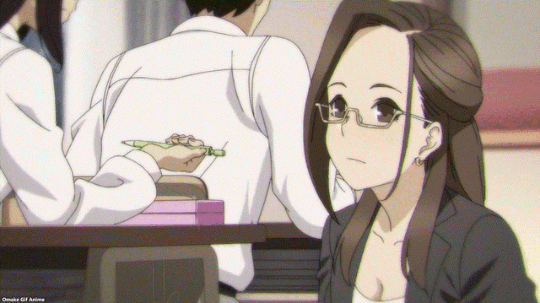
Ten Bits of Advice for Japanese Learners
- Everyone learns languages differently, so reflect on that kind of student you are. Approach language study with an open mind at first while you discover what approach(es) work best for you.
- I found writing out sample sentences to be extremely boring…yet super helpful at mastering the vocabulary being learned. The physical art of writing helps reinforce memory retention.
- Speaking of writing, understand that any kanji characters you learn to write…you will eventually forget. It’s just the world we live in, dominated by cell phones and Macs and PCs that make it super easy to bring up difficult kanji characters like 薔薇 bara (rose), which no one, not even Japanese people, can write by memory. So focus more on vocabulary, figuring out how grammar works, and reading, and don’t sweat that writing kanji will eventually fade from your mind.
- Don’t learn Japanese from anime or manga. I know you will anyway, but I wanted to throw this out there. As long as you understand that the language used in anime and manga is as stylized and unique as in historical period drama or, say, the dialect is spoken by Yoda in Star Wars, you can hopefully keep from being influenced by it too much.
- “Be 8x.” Basically, to solve any problem (such as learning Japanese, getting healthy, paying off debts), attack the problem from eight directions with as much energy as you can. Figure out which approaches are helping and keep doing that. If some ideas aren’t helping, quit those and substitute in some new ones!
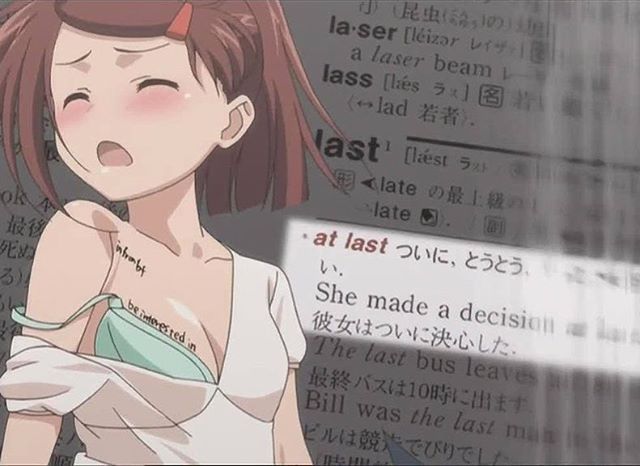
Thanks for reading this mini-review of the new Genki Textbooks Third Edition, one of the best ways to study Japanese in a modern and fun way. Find the textbooks on the site now, or browse our selection of textbooks, flashcards and more related to Japan’s language and culture!
Spring is almost here, and that means an excuse to enjoy delicious new snacks from Japan. The new J-List Box snack boxes are ready for you to order and will start shipping out around the middle of the month. Order your snack box now, or read a blog post on all the good stuff that’s inside this month!


